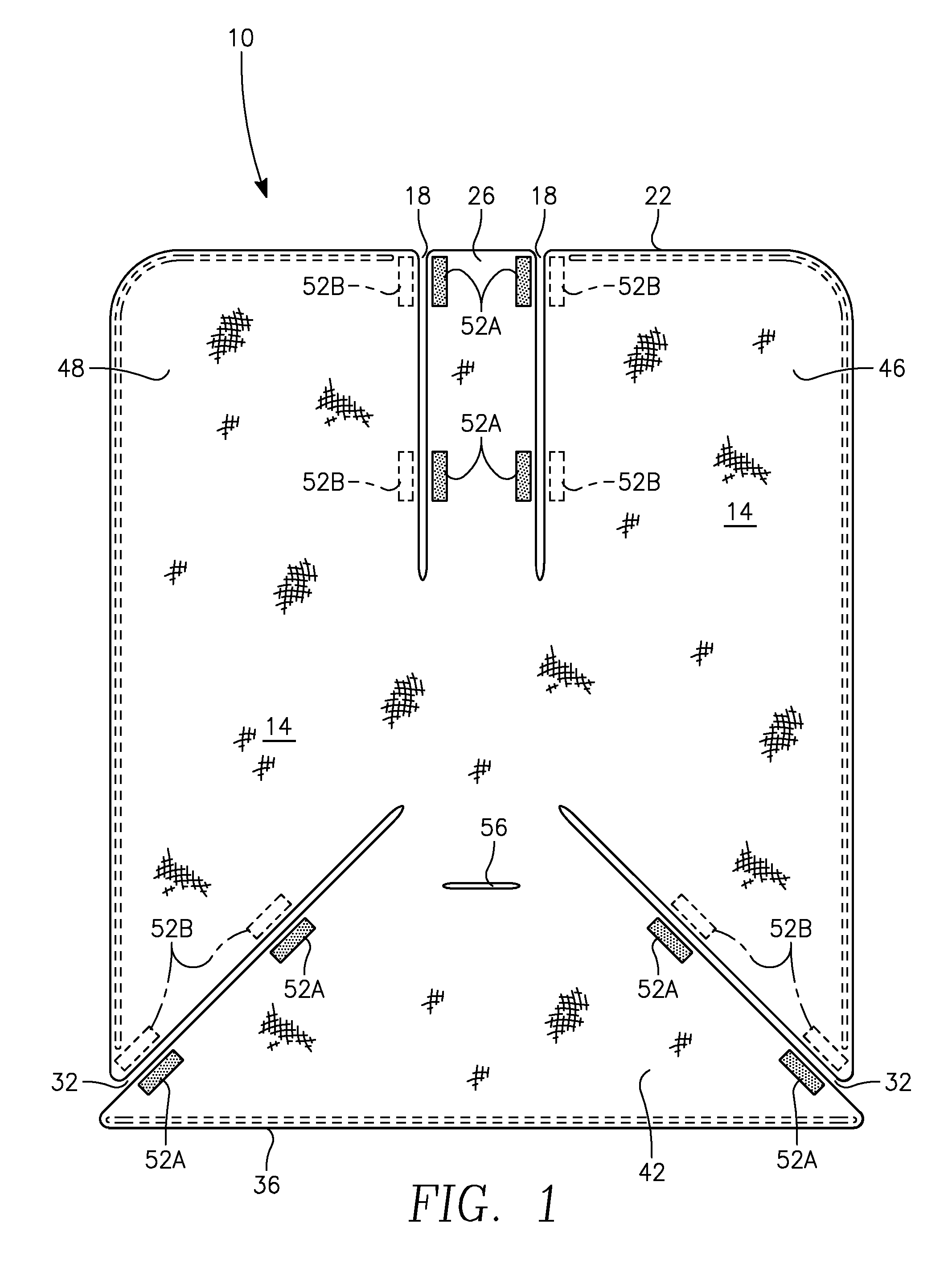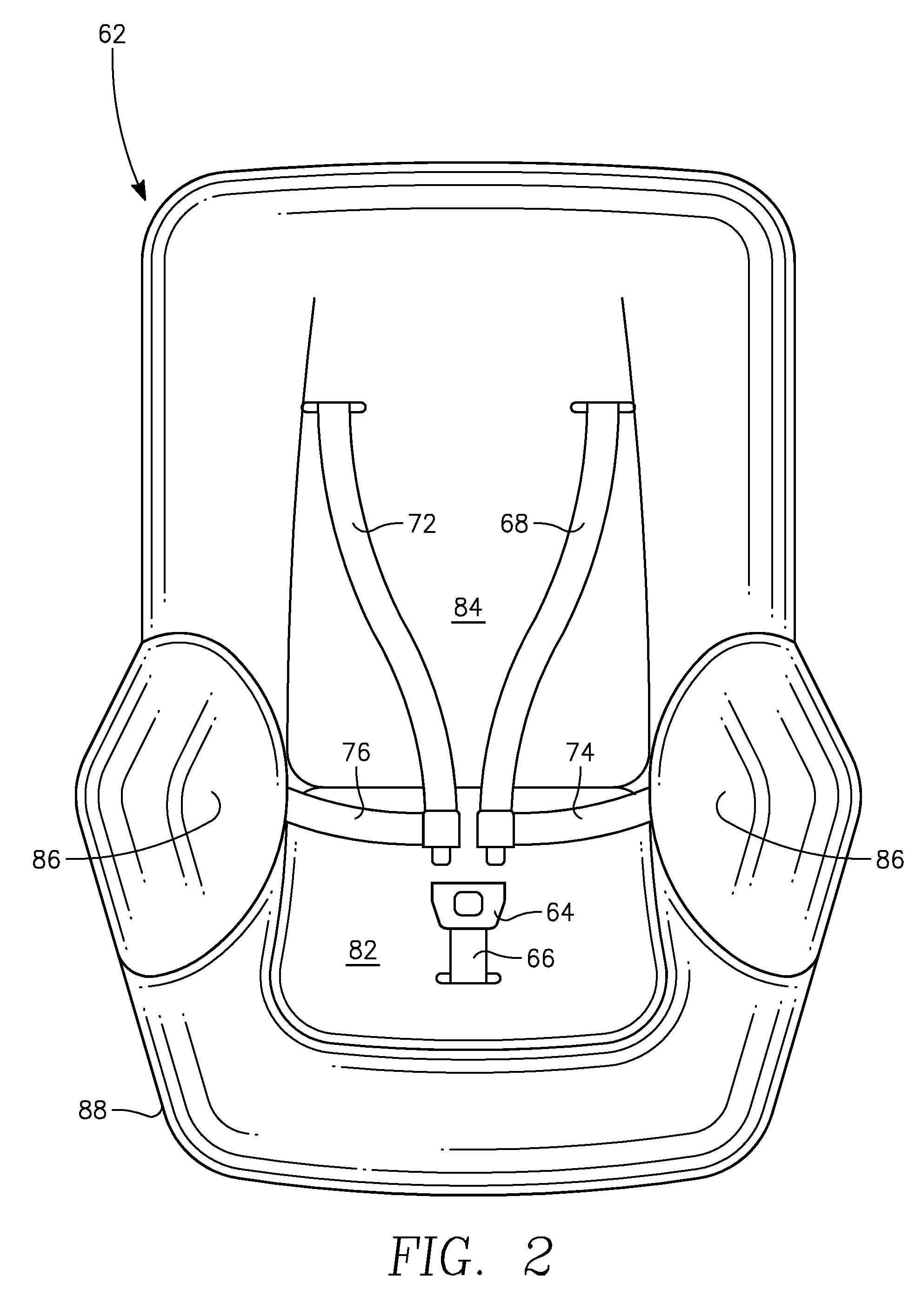Cover for child car seat
a child car seat and cover technology, applied in child seats, vehicle components, vehicle arrangements, etc., can solve the problems of easy compromise of the car seat, the inability of users to leave the seat in place, and the inability of the positioning apparatus and the internal parts and mechanisms to be affected, so as to prevent injury to the passenger, maintain the integrity and safety features, and prevent the effect of the car seat from being damaged
- Summary
- Abstract
- Description
- Claims
- Application Information
AI Technical Summary
Benefits of technology
Problems solved by technology
Method used
Image
Examples
Embodiment Construction
[0027]Reference is now made to the drawings wherein like numerals refer to like parts throughout. In FIG. 1, a child seat cover 10 is preferably fabricated using a one or multi-layer protective cover material 14 of substantially rectangular sheetform configuration. Although depicted in FIG. 1 as of woven construction, the present invention is not so limited, and the use of non-woven materials is also contemplated in fabricating the child seat cover 10.
[0028]A pair of dorsal slits 18 extend inwardly in a substantially vertical manner from an upper periphery 22 of the cover material 14, forming a back panel 26 of generally rectangular configuration. In a similar manner a pair of ventral slits 32 extend inwardly from a lower periphery 36 of the cover material 14, forming a seat panel 42. The ventral slits 32 are preferably formed on a bias, and in a particularly preferred embodiment, on a substantially 45-degree bias relative to the lower periphery 36.
[0029]While the pair of ventral sl...
PUM
 Login to View More
Login to View More Abstract
Description
Claims
Application Information
 Login to View More
Login to View More - R&D
- Intellectual Property
- Life Sciences
- Materials
- Tech Scout
- Unparalleled Data Quality
- Higher Quality Content
- 60% Fewer Hallucinations
Browse by: Latest US Patents, China's latest patents, Technical Efficacy Thesaurus, Application Domain, Technology Topic, Popular Technical Reports.
© 2025 PatSnap. All rights reserved.Legal|Privacy policy|Modern Slavery Act Transparency Statement|Sitemap|About US| Contact US: help@patsnap.com



